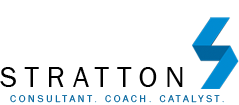“He who dares not offend cannot be honest.” (Thomas Paine, American colonist, patriot, and revolutionary)
As a leader, the quality of the information available to you in any process directly impacts the quality of the outcomes you can achieve.
So the more eyes and minds that deliver information that is more candid and brutally honest, the better your chances of having timely, accurate, and relevant insights to work with at every step along the way.
You may find there are cultural habits or routines that get in the way of true participation and straight-talk. As a leader, you need to acknowledge these implicit patterns, and explicitly challenge the assumptions people may have about the safety or the appropriateness of their full-on involvement.
Set for yourself and others a new, higher standard of responsibility for owning and speaking the truth in all things relevant to the business and its operations. Make it not only safe to speak up, but expected – part of any job’s responsibilities. And support people in learning to “de-personalize” objective assessments and critiques. Do whatever you can to help them to identify more with the aspirations and outcomes of the future than with any old allegiances or vested interests in the past.
Chances are, this will require you and your managers to lead differently. Take the time – do the work – to prepare and transform yourself and your executive team before attempting to impose any such expectations on others. In this way, you can each become, in every interaction, both a model and a catalyst for wider change.
The impact of incorporating the perspectives of people throughout your organization cannot be over-emphasized.
It is a good idea to start with structured interviews, surveys, or other forms of assessment to gauge the current state of the business. This provides an immediate signal to people that their honest perspectives and experiences are important and valued. It allows you to gather a lot of information very quickly, which can then be used to help sort and sift for key themes, distinctions, and priorities going forward.
While you should tailor your assessments according to the relevant functions and activities of each audience (whether an executive team, extended leadership group, functional departments, project team members, etc.), you should consistently check each protocol (the set of assessment questions) against the desired outcome. Ask “the real questions” that people aren’t usually invited to consider: What’s working, what isn’t, why isn’t it? Where do you see disconnects between goals and roles, between expectations and accountabilities?
The findings of such assessments should be synthesized in order to discern key themes and distinctions, and reported not only to leadership, but to all those who participated in the process and (as appropriate) anyone else who expresses a real interest in them. The more that your people share an honest view of the current state, the easier it will be for them to be on the same page and coordinate from a place of unity and alignment.
You may find it useful, at this stage, to seek an “outsider’s perspective” in helping to design and implement an appropriately focused assessment process – one that will productively inform your approach to the remaining steps in the process. This might be someone from your Human Resources function, or it might be a consultant. In any case, you should coordinate with them closely – don’t just pass it off as an unimportant task! This information, used intelligently, will serve to help guide, shape, and enable strategic progress over time. It’s worth the investment of your leadership time and attention.
It’s important not to rush into planning without a full and accurate picture of your current state. While many leaders are accustomed to acting quickly, there is real value in taking the time – and making the investment – necessary to really educate yourself on what, exactly, you are dealing with here. As Derek Bok (professer, John F. Kennedy School of Government) once observed: “If you think education is expensive, try ignorance.”
